Savoring the Natural: Exploring Traditional Miso Brewing in Nagano
Jul 19,2018
Savoring the Natural: Exploring Traditional Miso Brewing in Nagano
Jul 19,2018
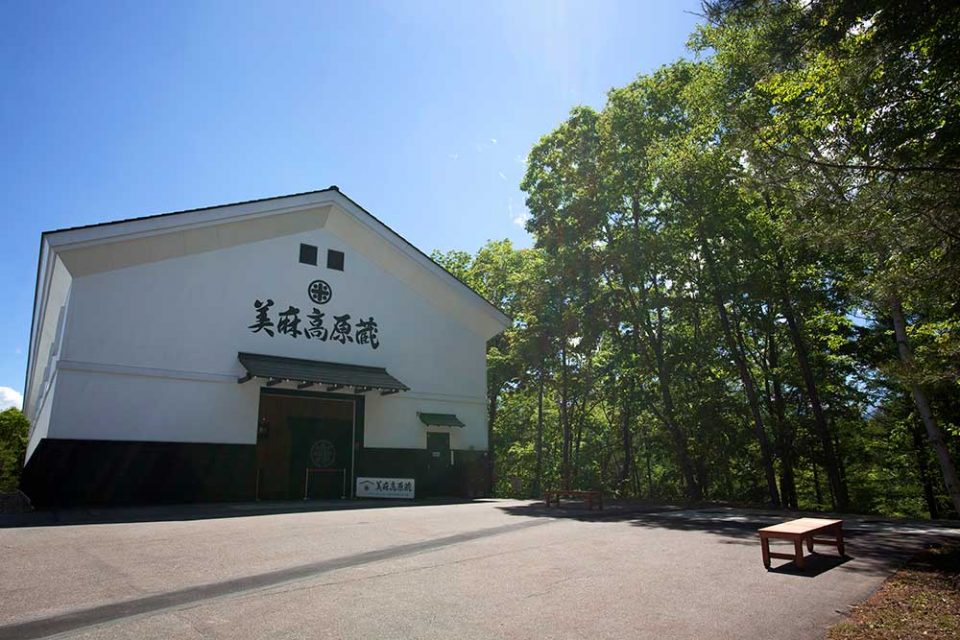

Located at the foot of the Northern Japanese Alps in Nagano Prefecture, the city of Omachi is famed for its delicious waters. Abounding in water resources, it is the site of some of Japan’s biggest dams, most notably the Kurobe Dam. In this two-part feature we’ll be exploring the area’s culinary attractions. We’ll start with Marukome Co., Ltd.’s Miasa Highland Fermentation Warehouse, in the east of Omachi almost 1,000 meters above sea level, where miso is made the natural way. Then we’ll check out some nearby eateries that are worth dropping by as well. Part I reports on the visitor facilities at Miasa Highland Fermentation Warehouse, where anyone can take a tour!

The area around Miasa Highland Fermentation Warehouse offers a spectacular view of the Southern Japanese Alps and the forests.
At Miasa Highland Fermentation Warehouse, the miso made at Marukome Head Factory in Nagano is leisurely aged at low temperature. Originally there were two warehouses here, one of which has been turned into a visitor facility where members of the public can try their hand at making miso and taste and compare different varieties. It opened on October 30, 2017.
The facility has in recent years become an increasingly popular destination for international tourists as nearby attractions such as Hakuba have become famous.
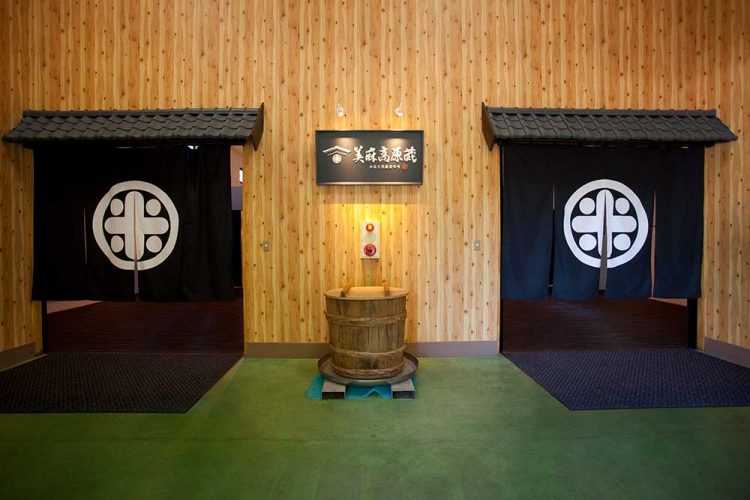
The entranceway of Miasa Highland Fermentation Warehouse
I visited the warehouse on a beautiful early summer’s day, yet inside the building it was almost chilly. I thought the air conditioning must be on, but to my surprise the facility didn’t even have air conditioning. There’s no temperature control at all.
Which makes sense come to think of it. The place is located almost 1,000 meters above sea level, and it requires no air conditioning even in midsummer. It’s the perfect location for aging miso throughout the year. The cool, refreshing air here feels wonderful in the sweltering summer months.
Inside are exhibits and placards that help visitors learn about miso-making and its history. The head of the facility, Mr. Koide, gave a lucid and very witty talk about Miasa Highland Fermentation Warehouse.
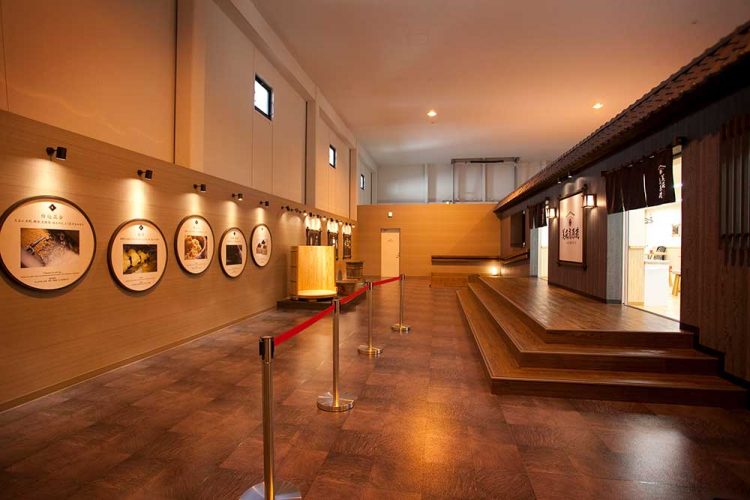
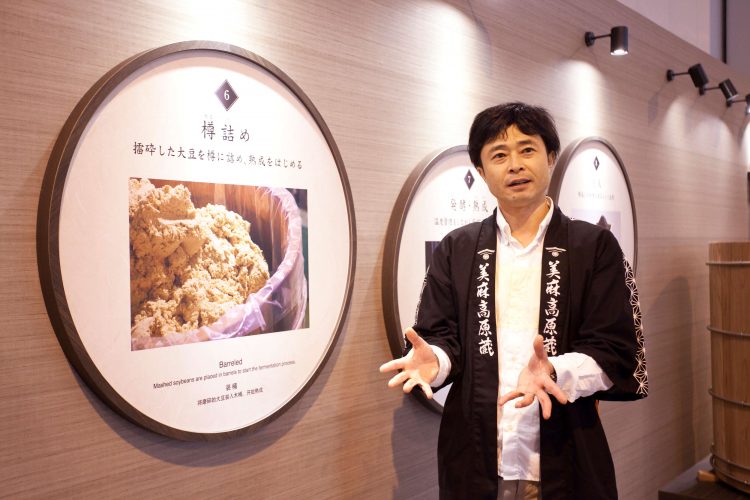
Mr. Koide of Marukome talking about the warehouse
The miso made at the Marukome factory is aged for an extended period at Miasa Highland Fermentation Warehouse. The keys to the process are the right environment inside the warehouse and the skill and experience of the artisans involved. Without these, it’s impossible to make a flavorful miso.
Nor must one forget the wooden barrels in which the miso is stored. They play a vital role in making warehouse-aged miso.
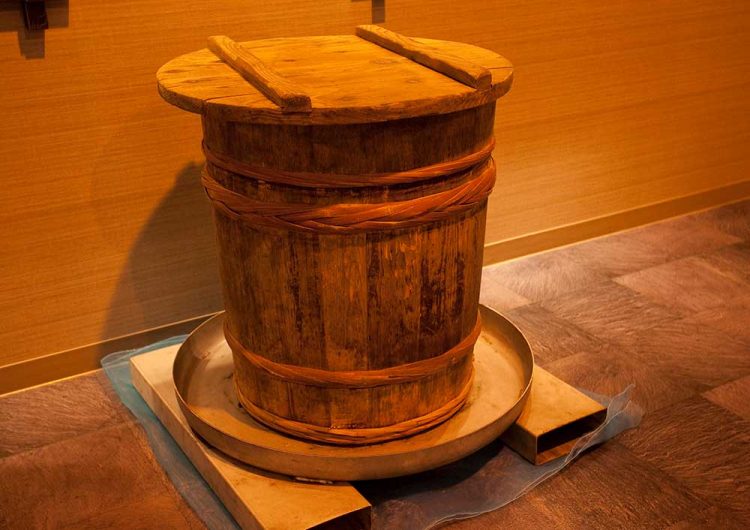
Marukome once used wooden barrels like this. There are almost no coopers left who make such old-fashioned barrels.
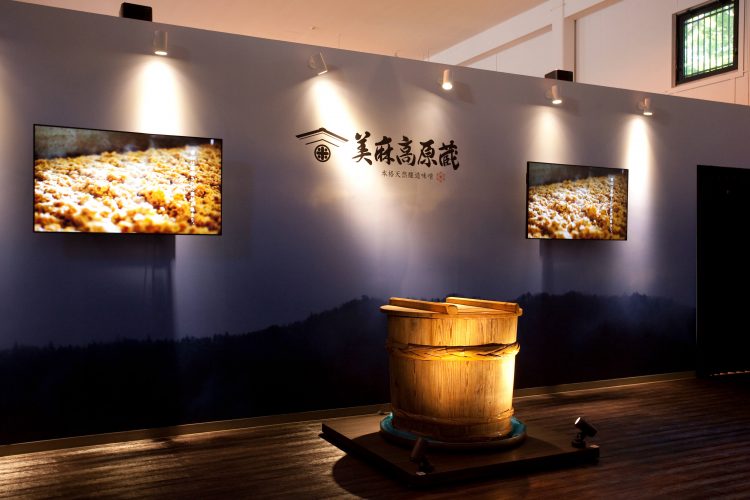
On display near the entrance is the oldest barrel of all, used when Marukome was founded 160 years ago.
Miasa Highland Fermentation Warehouse uses barrels made of Neba cedar grown in Neba at the south end of Nagano Prefecture. These barrels look big enough to hold two grown men, and it takes a lot of work to make one. They’re still used at the warehouse for miso-making today.

Cross section of a wooden barrel such as used today. It’s humungous!
Right now 800 kilograms of miso aged for two years in one of these Neba cedar barrels can be had for a million yen or up. They even throw in the barrel. Why not consider investing in a batch?
After the talk about Miasa Highland Fermentation Warehouse, miso-making class begins. Mr. Koide and his artisans take you through the steps in the miso-making process.
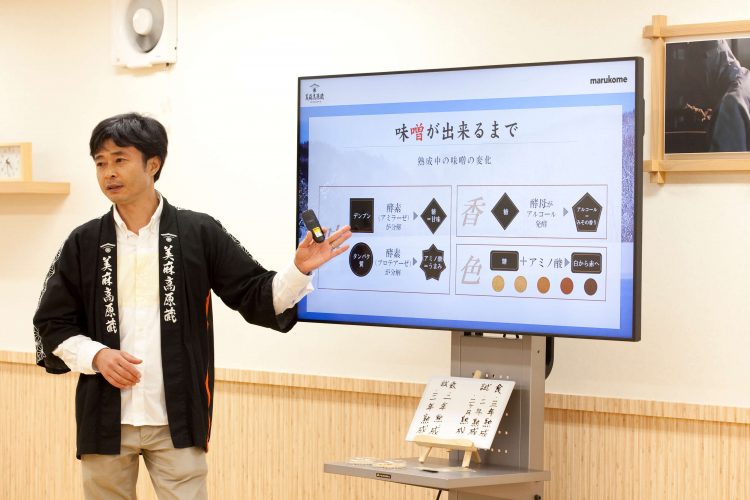
Ordinary miso is made from soybeans, rice koji (malt), and salt, and you perform the basic task of preparing those ingredients for fermentation yourself. First you mash boiled soybeans for all you’re worth. Then, once they’re all mashed, you mix them with rice koji and salt and put the mixture in a container.
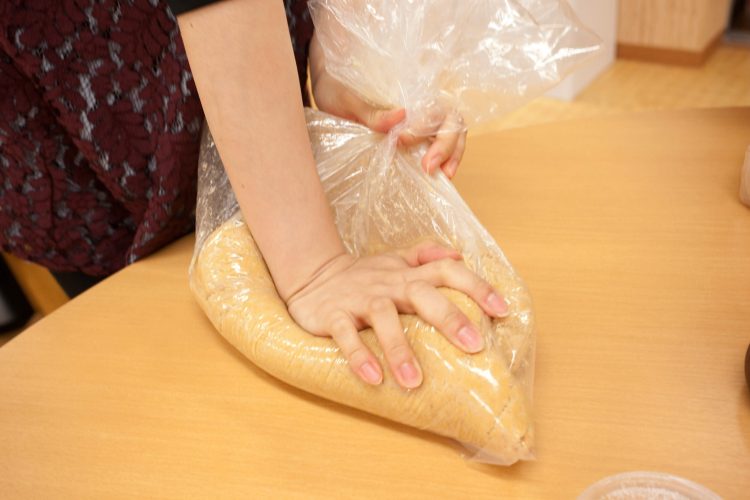
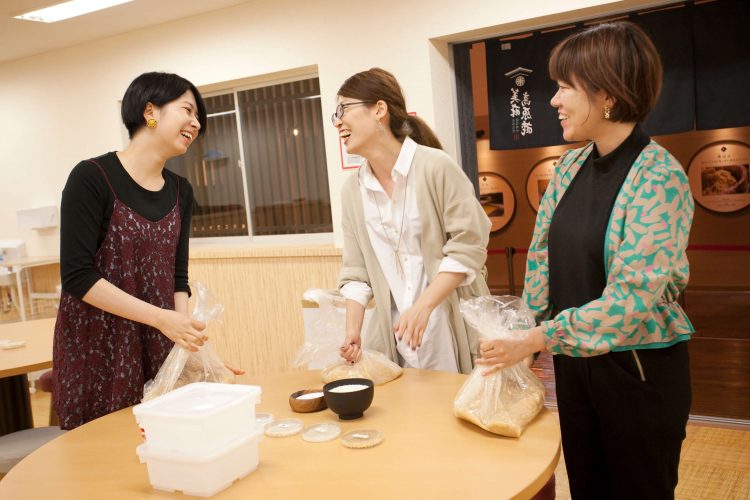
Participants preparing a batch of miso while chatting away like old friends
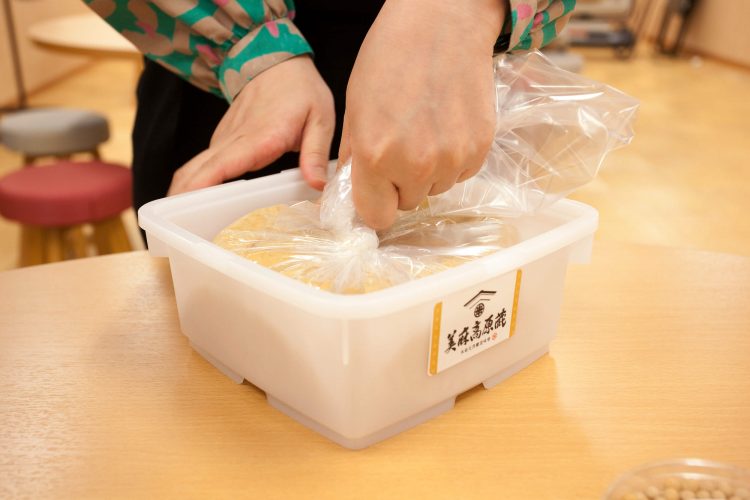
Put your batch of miso in the custom-made Miasa Highland Fermentation Warehouse container, and it’s ready to ferment!
But the miso isn’t finished yet. Now the most important part begins! You still have to take your mixture home and give it plenty of time to age. Depending on the environment in your home, it takes two months to age miso in summer and four to six months in winter, so tend it lovingly until then.
After having a go at making miso, you get to sample three types of miso aged for different lengths of time. On my visit I tried miso aged for two months, two years, and three years.
The miso aged for two months was still sharp and salty on the tongue, but with the two- and three-year-old miso the flavor progressively mellowed and deepened. It was fun to taste the difference.
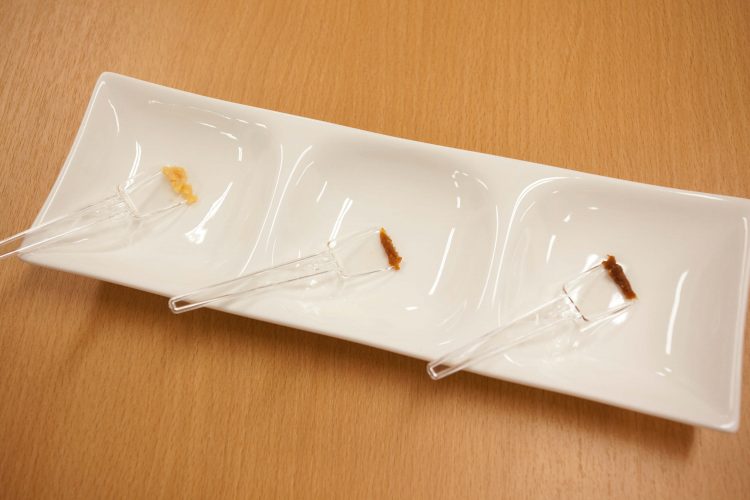
From left: Miso aged for two months, two years, and three years. The color gradation is obvious.
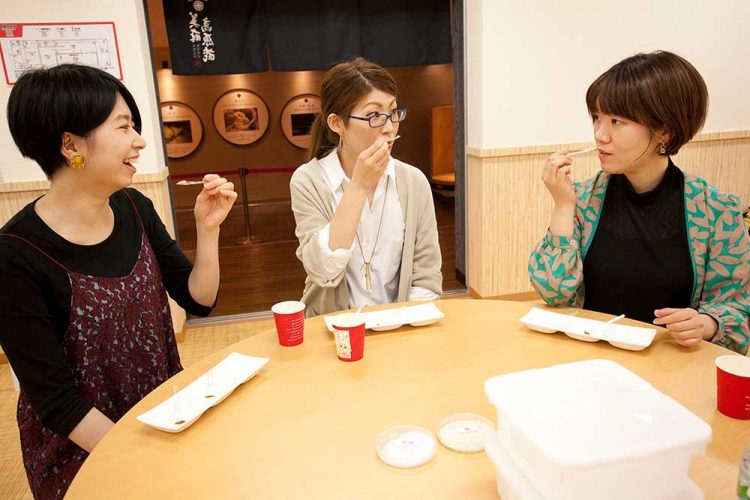
We then tried miso soup made with miso aged for two years and three years. The difference in flavor was amazing! From the color alone, it was instantly obvious that the two were completely unalike. The three-year-old miso possessed a deep, complex flavor that miso bought off the shelf just can’t deliver. It was bursting with sweetness and umami and rich in flavor. This miso was no mere sidekick. It was enough to help a glass of sake go down smoothly.
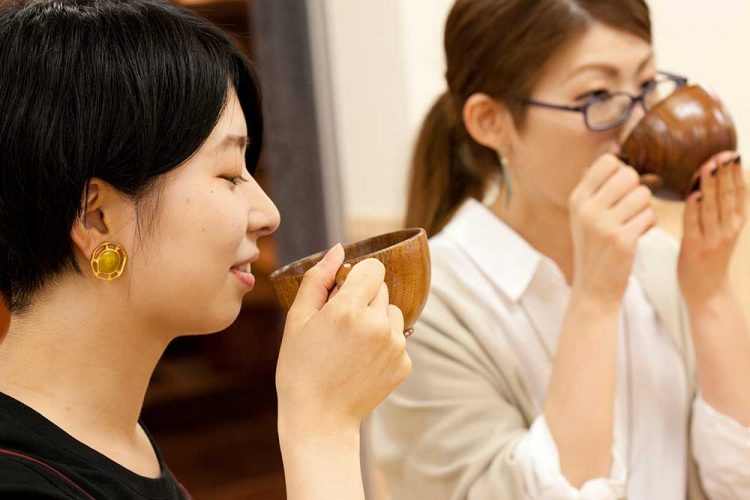
Trying soup made with miso aged for two and three years
The warehouse also has a mini quiz corner where you can improve your knowledge of miso. Here I learned some highly illuminating facts about the right way to store miso bought off the shelf. It was truly an eye-opening experience. Besides becoming acquainted with the process of making miso, you also get plenty of pointers on how to keep the miso you always use at home tasting great for longer. To learn more, visit Miasa Highland Fermentation Warehouse yourself!
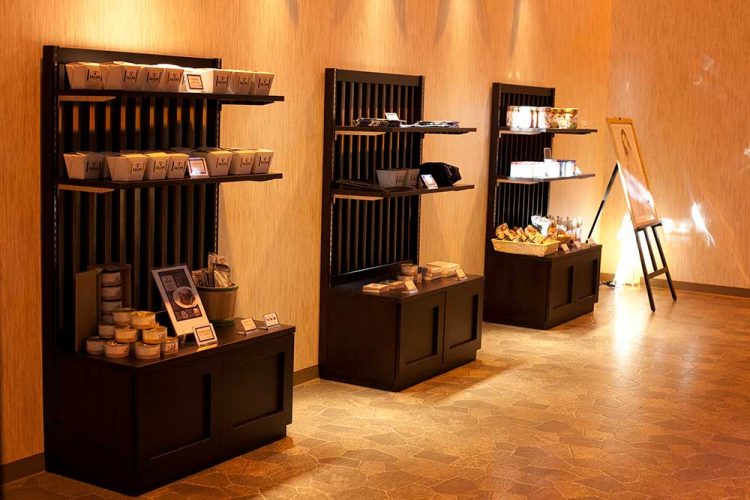
Having tried my hand at miso-making and tasted some samples, I then visited the shop on the premises, which offers limited-edition merchandise available nowhere else. Only here do they sell aged miso by weight. Remember to check out the place on your visit!
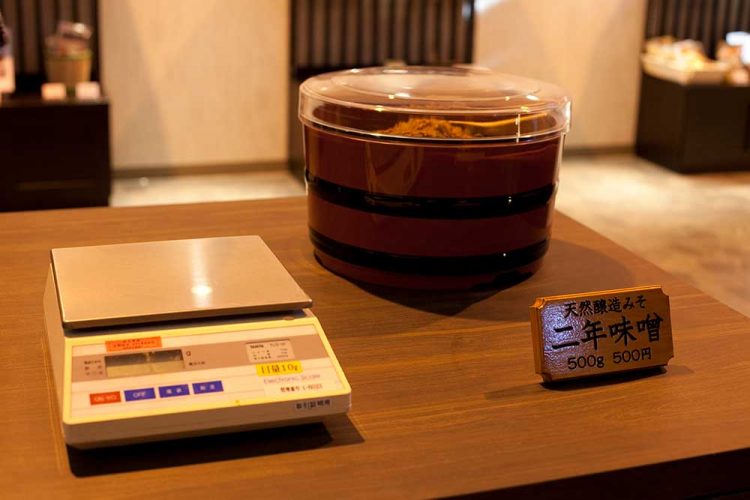
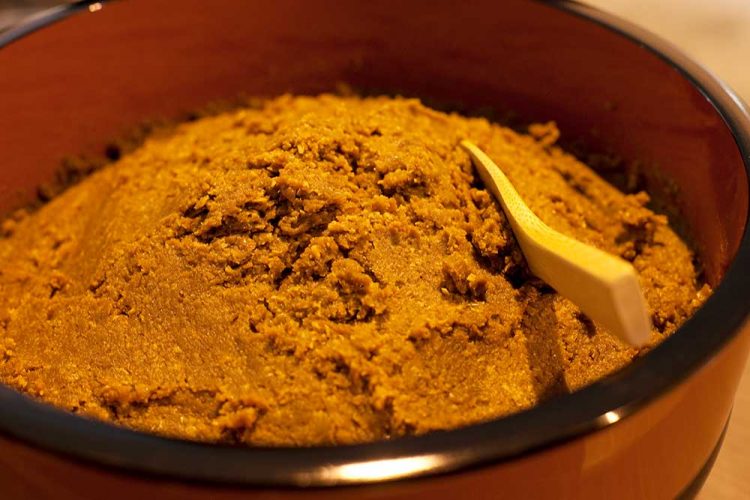
You weigh the miso yourself.
Also on sale are cans of mackerel cooked in miso and miso ball making kits. Either is the perfect gift for the folks back home. Just seeing this stuff on the shelf was enough to get me excited.
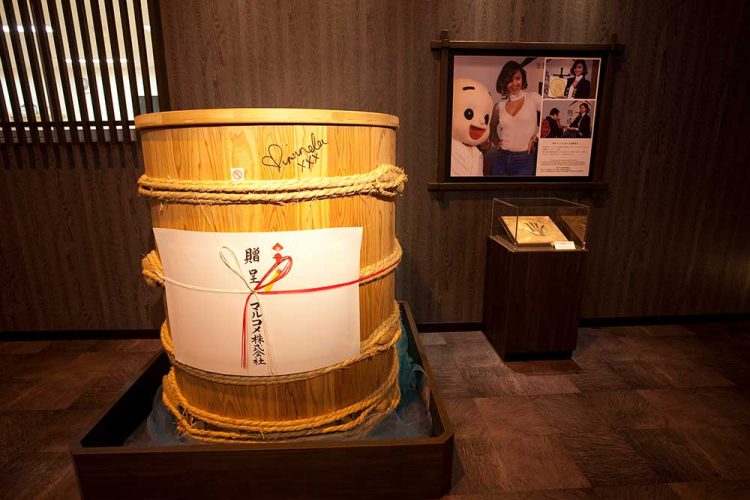
Supermodel Miranda Kerr, Marukome’s fermented food ambassador, has been to Miasa as well. Photos and a handprint from her visit are on display—plus an autographed barrel!
You’ll leave Miasa Highland Fermentation Warehouse with a better knowledge of miso—and a whole load of delicious treats. A visit takes somewhat over two hours in all, including the miso-making class and miso tasting. Miso is attracting global interest these days as the health food from Japan. So why not immerse yourself in the wonderful culture of miso by coming to Miasa Highland, which presents a different face each season?
There are also some great places to eat in Omachi that you should definitely check out on your visit to Miasa Highland Fermentation Warehouse. They’re showcased in Part II.